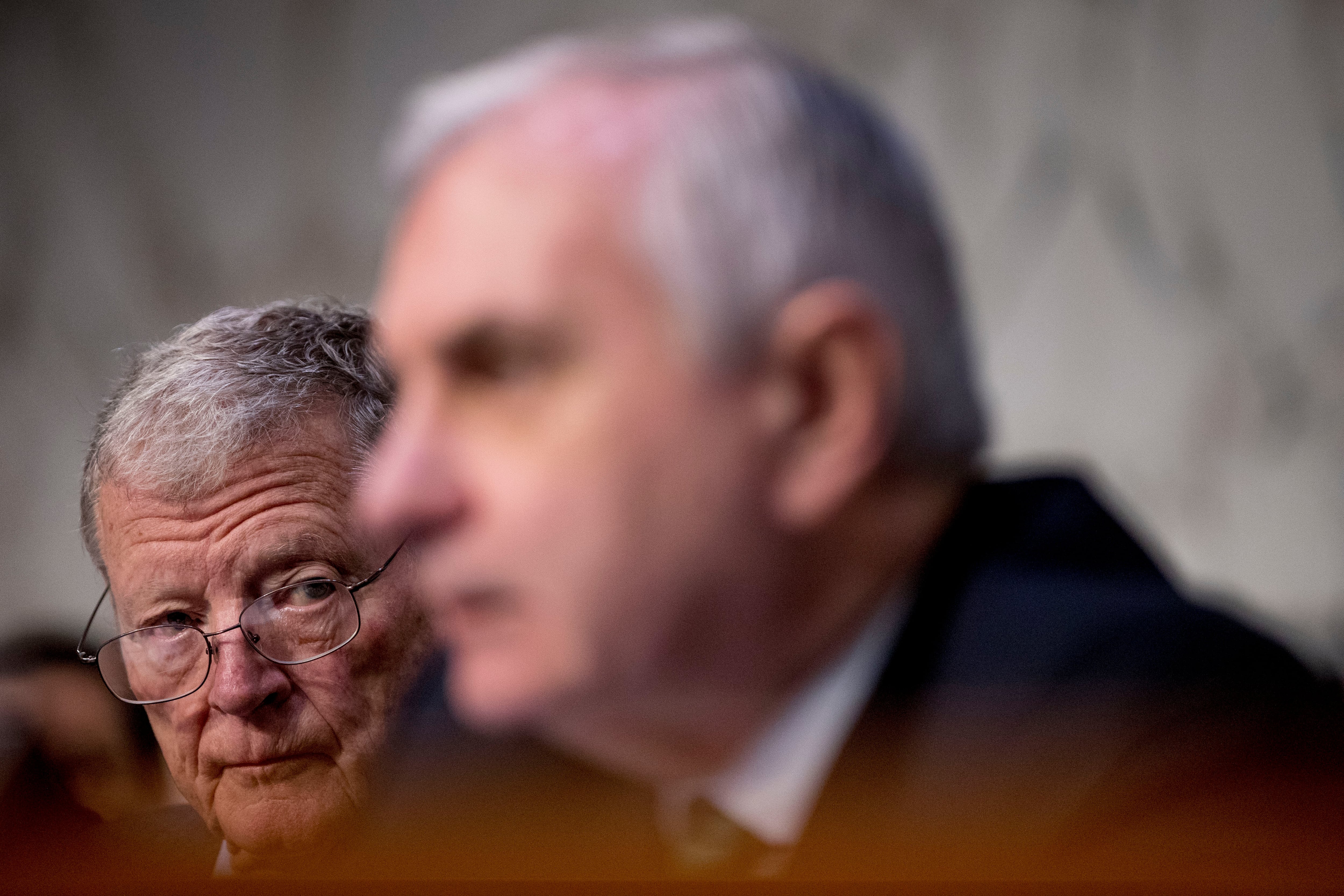WASHINGTON ― Lawmakers returning to Washington, D.C., this week are in a race against the clock to reach a budget deal to ease statutory spending caps and avoid a government shutdown starting Oct. 1.
While the Democratic-led House has passed 10 of its 12 appropriations bills, Senate appropriators have not yet scheduled a markup on any of theirs. Meanwhile, White House officials have floated the idea of a one-year stopgap funding bill, which would freeze the 2020 federal budget at the 2019 level.
Both chambers of Congress are only in session three more weeks before the August recess.
Talks have dragged on between congressional leaders and acting White House Chief of Staff Mick Mulvaney, Treasury Secretary Steven Mnuchin and acting Budget Director Russ Vought. Vought has reportedly indicated the White House is leaning toward a continuing resolution instead of a broader deal.
But that’s a no-go with Senate Majority Leader Mitch McConnell, R-Ky., who told reporters before the July 4 recess it would be “unacceptable ... from a defense point of view,” as would the automatic budget cuts known as sequestration.
The president’s request was for $750 billion for national defense, and the House-passed bill contained $733 billion. However, a “clean” CR would provide $716 billion. However, since the budget cap for defense is $576 billion for 2020, the CR would violate the budget caps by approximately $71 billion and trigger a sequester of that amount in January 2020.
RELATED

Amid divisions within the Democratic caucus, House leaders did not take up spending bills for the legislative branch and for Homeland Security, which was at the heart of last year’s 35-day government shutdown.
Following opposition from left-leaning Democrats turned off by military spending increases, House Democrats scuttled a non-binding budget resolution in April that would have supported increasing military and domestic spending by more than $350 billion over the next two years. They instead “deemed” the House’s budget numbers.
Senate Appropriations Committee Chairman Richard Shelby, R-Ala., had floated a similar move for the GOP-controlled Senate, but McConnell shot that down last month, telling reporters the goal should be an agreement between the White House and House Speaker Nancy Pelosi, D-Calif., to find the top-line numbers.
Asked Monday whether there had been progress, Shelby said, "I thought we were close two weeks ago ... but there hasn’t been any movement yet.
“This is high time for a serious conversation, the sooner the better, between the [House] speaker and the secretary of the Treasury,” Shelby said, adding: “I’ve said I thought we could deem the numbers. [McConnell] wants to do something that’s more certain. That’s what I’d prefer to do.”
Beyond McConnell, defense hawks are making their voices heard in opposition to the idea of a long-term CR. Senate Armed Services Committee Chairman Jim Inhofe and SASC Seapower Subcommittee Chairman David Perdue, R-Ga., along with 14 other Senate Republicans, wrote to White House budget negotiators in opposition.
"Simply put, our adversaries do not handcuff their militaries with funding gimmicks like continuing resolutions — nor should we,” the letter reads, adding a yearlong CR would create “draconian conditions” for the military.
The lawmakers said a year-long CR would derail implementation of the National Defense Strategy, derail a pay raise for troops and erode both readiness and lethality.
“Military training and equipment would all be significantly reduced, resulting in a less lethal fighting force,” the letter reads. “Additionally, our military depots would be prevented from hiring and retaining the highly trained workforce necessary to maintain our existing vehicles, tanks, ships, and aircraft.”
RELATED

On Monday, Perdue said he would like to see Shelby and his counterpart, Sen. Patrick Leahy, D-Vt., quickly find agreement bills for the Pentagon and the departments of Labor and Health and Human Services, which would demonstrate bipartisan support for 70 percent of the overall budget. (Arriving back in town after the recess, he may not have known McConnell had rejected that plan.)
“If we get agreement on the dollar amounts between Labor-HHS and defense ― and we’re right there according to Leahy and Shelby ― I think that shows we can get bipartisan support to get this done, if you cut out the partisan politics,” Perdue said. “I think we can get those bill done, and if we don’t get them done, I don’t know how we go home in August.”
Pentagon leaders have spent months saying the best outcome would be a budget deal that avoids both sequestration and a year-long CR.
At a hearing in May, former Acting Defense Secretary Patrick Shanahan said sequestration would force cuts to military end strength and modernization ― particularly in emerging areas like artificial intelligence and hypersonic weapons.
“A continuing resolution would hamstring the department. Under a CR we cannot start new initiatives including increased investments and cyber, space, nuclear modernization and missile defense,” Shanahan said. “Second, our funding will be in the wrong accounts and third, we would lose buying power."
At a hearing in April, then-Air Force Secretary Heather Wilson said the service would take a $29 billion cut she presented in terms of cuts to aviation platforms.
“That would be no F-35s, cut all of the KC-46s, stop the B-21 program, no ground-based strategic deterrent, no research, development, test and evaluation for any space system, most of the fourth- and fifth-generation [fighter jet] modifications, and all of science and technology,” she said.
“Or, $29 billion means all of weapons systems sustainment, all flying hours, all base operations and airfield support, and all munitions, together, make $29 billion.”
Joe Gould was the senior Pentagon reporter for Defense News, covering the intersection of national security policy, politics and the defense industry. He had previously served as Congress reporter.




